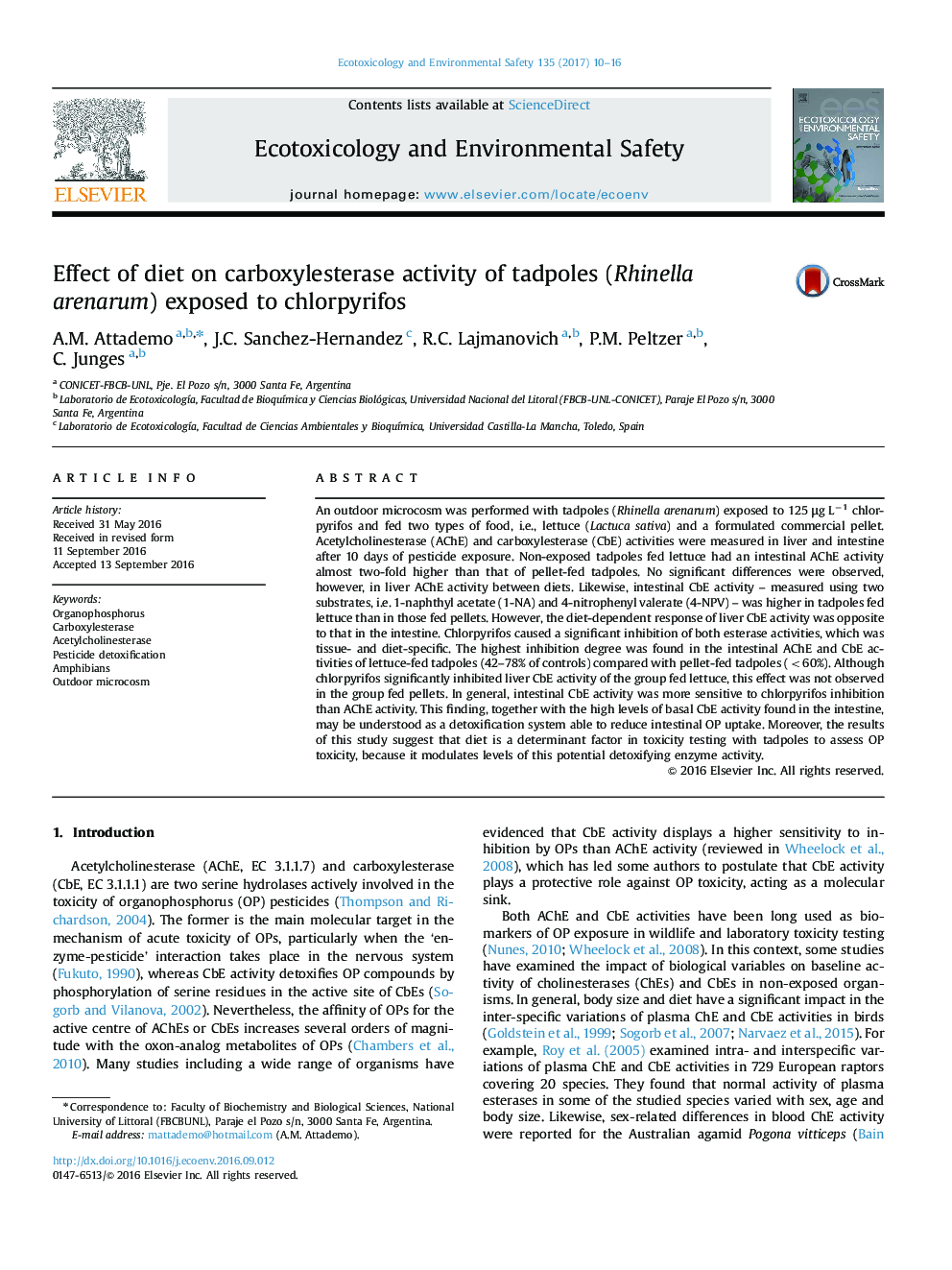| Article ID | Journal | Published Year | Pages | File Type |
|---|---|---|---|---|
| 4418967 | Ecotoxicology and Environmental Safety | 2017 | 7 Pages |
•Chlorpyrifos inhibited CbE activity, but largely depended on diet type.•CbE activity was more sensitive to chlorpyrifos than AChE activity in the intestine.•CbE and AChE activities were higher in intestine of tadpoles fed a plant-rich diet.
An outdoor microcosm was performed with tadpoles (Rhinella arenarum) exposed to 125 μg L−1 chlorpyrifos and fed two types of food, i.e., lettuce (Lactuca sativa) and a formulated commercial pellet. Acetylcholinesterase (AChE) and carboxylesterase (CbE) activities were measured in liver and intestine after 10 days of pesticide exposure. Non-exposed tadpoles fed lettuce had an intestinal AChE activity almost two-fold higher than that of pellet-fed tadpoles. No significant differences were observed, however, in liver AChE activity between diets. Likewise, intestinal CbE activity – measured using two substrates, i.e. 1-naphthyl acetate (1-NA) and 4-nitrophenyl valerate (4-NPV) – was higher in tadpoles fed lettuce than in those fed pellets. However, the diet-dependent response of liver CbE activity was opposite to that in the intestine. Chlorpyrifos caused a significant inhibition of both esterase activities, which was tissue- and diet-specific. The highest inhibition degree was found in the intestinal AChE and CbE activities of lettuce-fed tadpoles (42–78% of controls) compared with pellet-fed tadpoles (<60%). Although chlorpyrifos significantly inhibited liver CbE activity of the group fed lettuce, this effect was not observed in the group fed pellets. In general, intestinal CbE activity was more sensitive to chlorpyrifos inhibition than AChE activity. This finding, together with the high levels of basal CbE activity found in the intestine, may be understood as a detoxification system able to reduce intestinal OP uptake. Moreover, the results of this study suggest that diet is a determinant factor in toxicity testing with tadpoles to assess OP toxicity, because it modulates levels of this potential detoxifying enzyme activity.
